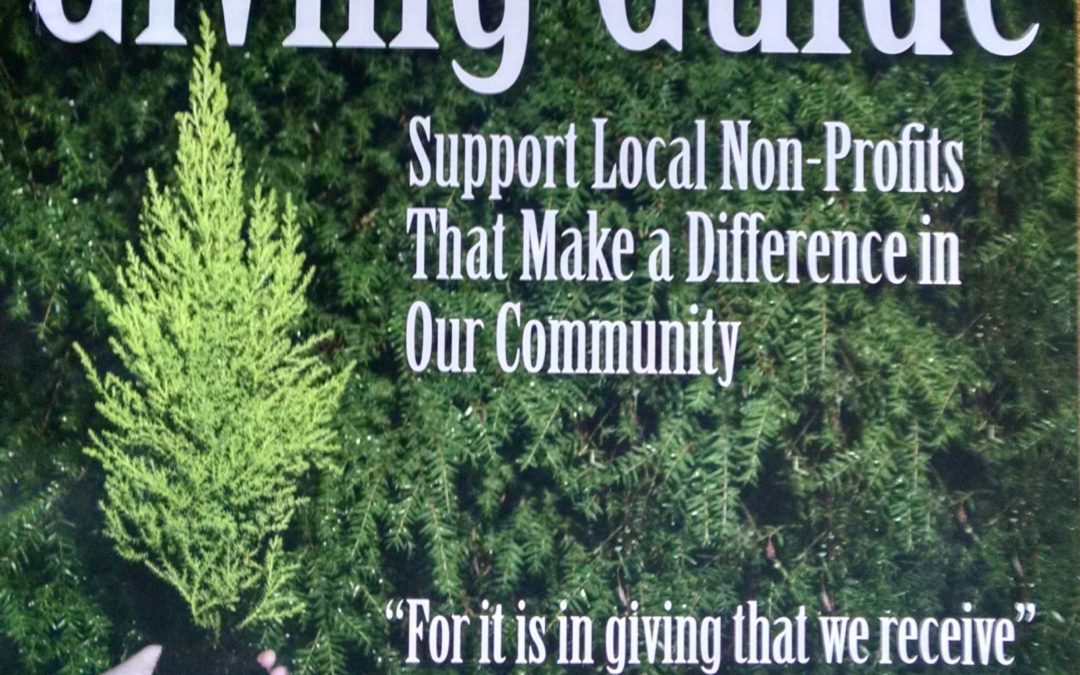
by Guest | Dec 23, 2017 | Archive
Tis the busy time of year, and much of the busy-ness is the attempt to find the “perfect” gift for family and friends. Many of us simply have too much stuff, which has you striving to find that gift that “keeps on giving.”
How about a donation in the name of your family member or friend to a local nonprofit? Or a membership in one of the organizations that will give your gift recipient all kinds of benefits throughout the next year? The donation will benefit many in our community.
The first annual Tillamook County Giving Guide is arriving in Tillamook County mailboxes, and copies are available at all Tillamook County Library branches, as well as online here at the Tillamook County Pioneer (www.tillamookcountypioneer.net) or North Coast BBQ (www.northcoastbbq.com). The guide provides overviews of 22 Tillamook County nonprofit organizations, and lists dozens more nonprofits in the County. Year-end donations help on your taxes, but the help that your giving provides to our local nonprofits is much greater.
There are many ways to provide assistance to these nonprofit organizations especially with your year-end gifts. Donations to these valuable organizations are put to work right here in our communities, benefitting our friends and neighbors.
The Tillamook County Giving Guide was produced in partnership with Fulcrum Community Resources, and here is the introduction from the publication.
Fulcrum Community Resources is excited to partner with Tillamook County Pioneer to produce this inaugural edition of the Tillamook County Giving Guide.
For 10 years, Fulcrum hosted the Alternative Gift Market started by Ginger Edwards. This market featured some of our local nonprofits and encouraged folks to give to them, or to international nonprofits, in lieu of buying gifts for their loved ones for the holidays. Fulcrum’s answer to no longer hosting the Market is this Guide.
To provide guidance and encouragement to give to these organizations that fulfill important missions and weave the very fabric of our community’s coat of many vibrant colors, one of the many wonders and the beauty that is Tillamook County.
We know the people who people our local nonprofits work hard to provide a wide variety of services, some of which are not offered elsewhere, that enhance our lives here in Tillamook County. Their missions cover all the sectors of our society: health and wellness, sustainability, environment, conservation, food security, women, children, animals, and arts and cultural.
There are over 150 nonprofits in Tillamook County (36 in the North County Directory.) Besides their various services, our local nonprofits add other value to our community by providing jobs, a trained and inclusive workforce, volunteer opportunities, internships and training, and places and events where we gather socially. And more subtly, but no less importantly, because they work together, they are helping to create a culture of collaboration, partnerships and communication.
Here is YOUR opportunity to give back. Inside you will find information about the nonprofits who have been able to participate in this guide. We hope you will peruse these pages and give generously. Not every nonprofit had the budget or sponsor to pay for a page, (which paid for the printing and mailing) so we have also included a list of most of the nonprofits in the county. If you don’t see your favorite nonprofit on a page, check the list, and if you don’t see a local nonprofit please contact us to add it to the online list. We thank you in advance for your support of our local nonprofits that enrich our lives and community!
Fulcrum Community Resources (fulcrumresources.org) mission is to foster the transition of the Nehalem Bay community to a sustainable future. Our volunteer group initiates and coordinates local programs in north Tillamook County on the north Oregon Coast. We also sponsor others’ projects that fit with our mission and goals. We see Fulcrum, not as a hub, but as an enabling node – one of many groups locally who are organizing and creating projects. Our guiding philosophy is that the most effective and innovative projects are initiated at the grassroots community level.
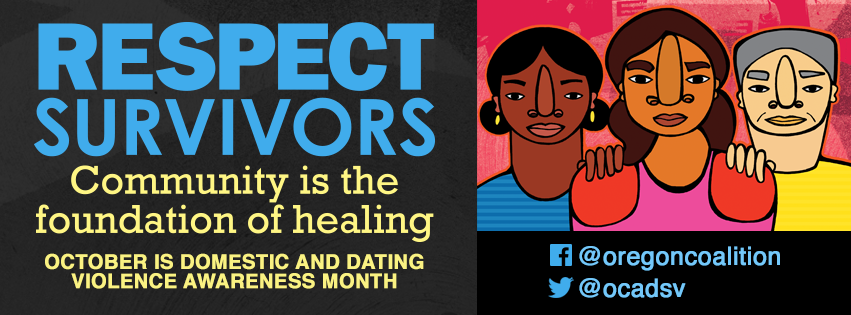
by Guest | Oct 20, 2017 | Archive
Will you join us this month in Respecting Survivors? Display your purple awareness ribbons; invite TCWRC to speak to your community or faith group; make a donation to TCWRC’s Heart Guild. Join us in person on Wednesday, October 25 at noon at TCWRC, 1902 2nd Street, for our annual Memorial Walk to Carnahan Park to remember and honor victims of intimate partner violence. Respect Survivors. Let us be a community of respect, support, and healing.
By Emily Fanjoy, Health Programs Coordinator, Tillamook Co. Women’s Resource Center
The Oregon Women’s Foundation 2016 “Count Her In” Report, on the state of women and girls in Oregon, found that over half of the state’s female population has experienced some form of sexual or intimate partner violence in her lifetime. Women are not the only victims as same sex couples experience violence at approximately the same rates as heterosexual couples, and 5 million children witness domestic violence each year. Personal and community health and wellness is negatively impacted by intimate violence. So what can we do?


Knowledge is power, so understanding the scope of the issue is imperative. Most people, including many survivors, identify domestic violence as physical assault, but it is so much more. Intimate partner, domestic, or teen dating violence (IPV) occur when one person in a relationship uses a pattern of methods and tactics to gain and maintain power and control over the other person. It’s a cycle that generally gets worse over time–not a one time incident. People who choose abusive behavior use jealously, isolation, emotional and psychological abuse, coercion, intimidation, and threats often long before physical violence occurs. Leaving an abusive relationship is not always the best, safest or most realistic option for survivors. To address IPV as a community it’s critical that we work from this comprehensive definition of IPV, to shift our focus from “Why don’t they just leave?” to “How can we support them?”
As many social service systems–education, health care to name a few– move to become trauma informed, they are working in a way that acknowledges people from every walk of life have been impacted by many types of trauma. The idea springs from the groundbreaking Adverse Childhood Experiences study (ACEs), that showed 1) how incredibly common traumatic experiences of childhood trauma are–including food insecurity; parents with mental illness; incarcerated parents; emotional, physical, and sexual abuse, and 2) how these experiences can have a profoundly negative impact on health and wellbeing. This is true for traumatic experiences in childhood as well as traumatic experiences, including and especially IPV, in adulthood. Dr. Vince Felitti, lead co-researcher for the ACEs study, emphasized that the study showed the most detrimental form of trauma is constant and repeated forms of shaming. Intimate partner violence and all of the tactics of gaining and maintaining power and control revolve around one partner shaming and degrading the other. This is why talking openly about IPV is so challenging for survivors. Even though everyone knows survivors of IPV, they may not be aware of that part of their friend or family members’ history. This is why trauma informed care is so important. It doesn’t require that individuals disclose their histories, but makes spaces where they are accepted and supported without judgment.
This year the Oregon Coalition Against Domestic and Sexual Violence awareness month theme is “Respect Survivors: Community is the foundation of healing”. We all know survivors, whether we know it or not. We love them for their humor, their caring, and the gifts they bring to our lives. We need them in our families, and in our community. And they need us to support them, respect them, and acknowledge them.
Shame means people– people we know and love–suffer in private with their therapists at best, or in silence alone. Community support offers understanding, love, and compassion. Community support is the key to resilience and thriving. In honor of healing in community TCWRC will begin offering A Window Between Worlds therapeutic art group for trauma recovery and resiliency starting this October. Call TCWRC for more information, 503-842-9486.
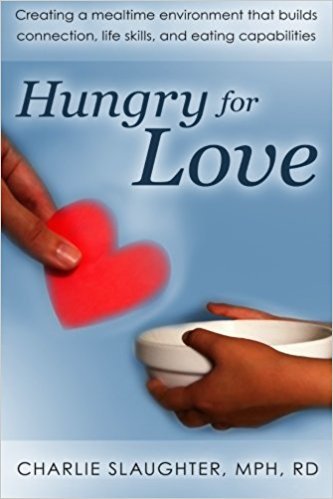
by Guest | Sep 30, 2017 | Archive
Autumn already? Feel like you’re just “falling into Fall” wondering, what happened to August and September? Take some time in October for a focus on caring well – for our children and with self care. There are several upcoming events from the Year of Wellness (YOW) and community partners to help you with ways to improve our lives and the lives of our community’s children from nationally-recognized speakers.
October 5th, the Circle of Security Parenting (COS-P) program comes to Tillamook, sponsored by YOW and Columbia-Pacific CCO. Held at TBCC, this is a FREE full-day training event, from 9:30 to 4:30 pm, and registration is required, at https://cosp_tillamook.eventbrite.com. This interactive presentation equips parents, teachers, and caregivers with new tools to create a better quality relationship with infants, children, and/or students. Hungry for Love author Charles Slaughter, MPH, RD, provides a three-part, one-day experience that teaches information and skills to build resilient children as they develop.
 Charlie Slaughter is an early childhood prevention coordinator for the Connecticut Department of Children and Families and has a passion for helping children, parents, and providers thrive in life. Charlie was awarded the first ever Circle of Security International award in 2013. He has been instrumental in helping to spread Circle of Security Parenting (COS P). He is interested in the potential for using COS P to create a community-wide approach to build and support secure attachment in children. Charlie also works with preschools and parents to build developmentally healthy mealtime environments. He is the author of Hungry for Love: Creating Mealtime Environments that Build Connection, Life Skills, and Eating Capabilities. Charlie is also interested in effective systems change within communities and organizations to support children’s healthy development.
Charlie Slaughter is an early childhood prevention coordinator for the Connecticut Department of Children and Families and has a passion for helping children, parents, and providers thrive in life. Charlie was awarded the first ever Circle of Security International award in 2013. He has been instrumental in helping to spread Circle of Security Parenting (COS P). He is interested in the potential for using COS P to create a community-wide approach to build and support secure attachment in children. Charlie also works with preschools and parents to build developmentally healthy mealtime environments. He is the author of Hungry for Love: Creating Mealtime Environments that Build Connection, Life Skills, and Eating Capabilities. Charlie is also interested in effective systems change within communities and organizations to support children’s healthy development.
 Later in October, SOS Tillamook continues their “Community Conversations” with a speaker series featuring Robin Rose on October 19th and 20th that provides a focus on self-care and stress reduction. Join us for one or all three workshops exploring how our own behavior and attitude can affect the people around us. Learn how to recognize and change our brain response. Rejuvenate our passion for what we do both professionally and personally. October 19th at the Tillamook Main Library from 5:30 to 7:30 pm “Taking a Brain Break”; October 20th at TBCC from 9 am to Noon, “Leaving it at the Door: Professional Resilience”, and then from 1 to 4 pm, “Smiling and Nodding: Working with Challenging People.” A renowned trainer, speaker and consultant, Robin’s expertise is in teaching people how to stay calm, professional, and effective — especially during high-stress, high-pressure situations. Robin helps people be their best when it matters most.
Later in October, SOS Tillamook continues their “Community Conversations” with a speaker series featuring Robin Rose on October 19th and 20th that provides a focus on self-care and stress reduction. Join us for one or all three workshops exploring how our own behavior and attitude can affect the people around us. Learn how to recognize and change our brain response. Rejuvenate our passion for what we do both professionally and personally. October 19th at the Tillamook Main Library from 5:30 to 7:30 pm “Taking a Brain Break”; October 20th at TBCC from 9 am to Noon, “Leaving it at the Door: Professional Resilience”, and then from 1 to 4 pm, “Smiling and Nodding: Working with Challenging People.” A renowned trainer, speaker and consultant, Robin’s expertise is in teaching people how to stay calm, professional, and effective — especially during high-stress, high-pressure situations. Robin helps people be their best when it matters most.
Reaching beyond the common model of “anger management”, Robin’s approach helps people understand exactly what happens, chemically and physiologically, when they get stressed. She teaches people how to override the fight or flight response, how to shift from reactive impulses into more effective responses, and how to stay respectful, productive and most importantly — professional.
People walk away with immediately useful tools that allow them to move beyond the limited reactions of the survival brain back to their thinking brain. This is where all their best abilities and optimal solutions are easily accessed.
Registration is required for these workshops at: https://sosrobinrose.eventbrite.com. For more information contact: DeAnna Pearl, Prevention Specialist, SOS Tillamook, the prevention program for Tillamook Family Counseling Center, DeAnnaP@tfcc.org; (503) 842-8201 x 270.
Multiple forms of Continuing Education Credits are available for attendance at these trainings. For more information, please email whiteh@careoregon.org or deannap@tfcc.org.

by Guest | Aug 26, 2017 | Archive
By Neal Lemery
What is the value of art in our lives? Does it have an impact?
“Art is the lie that enables us to realize the truth.” (Pablo Picasso)
Art is a way of finding and expressing the truth in our lives. It allows us to explore and find things within ourselves we may not have realized are there. Art allows us to discover who we are.
“Art is an irreplaceable way of understanding and expressing the world,” said Dana Gioia, chair, National Endowment for the Arts. “There are some truths about life that can be expressed only as stories, or songs, or images. Art delights, instructs, consoles. It educates our emotions.” (Commencement address, Stanford University, 2007)
Working in high school art classes, researchers Hetland and Winner found that arts programs teach a specific set of thinking skills rarely addressed elsewhere in the school curriculum—what they call “studio habits of mind.” One key habit was “learning to engage and persist,” meaning that the arts teach students how to learn from mistakes and press ahead, how to commit and follow through. “Students need to find problems of interest and work with them deeply over sustained periods of time,” write Hetland and Winner.
They found that “the arts help students learn to ‘envision’—that is, how to think about that which they can’t see. That’s a skill that offers payoffs in other subjects, they note. The ability to envision can help a student generate a hypothesis in science, for instance, or imagine past events in history class. Hetland and Winner, Studio Thinking: The Real Benefits of Visual Art Education (2007).” Karin Evans, Arts and Smarts, Greater Good Magazine, UC Berkeley, (December 2008)
“Along with the perks of enjoying and experiencing art, there are real-world benefits to making the art with your own two hands. According to a 2014 study, producing visual art improved psychological resilience and increased brain activity for the participants by the end of the experiment.” Gabe Bergado, Mic.com (December 15, 2014)
“Art allows children to express emotions that can be difficult to discuss with others.
“According to research conducted by the Childcare Education Institute, ‘art offers children an important outlet for emotional expression and the assurance that their feelings are valuable,’ which is particularly critical for disadvantaged children whose feelings might have never been validated. Expressing emotions such as anger or fear through artistic expression such as dance or writing allows children cope with aspects of living in a healthy, safe space. It also enables them to release difficult emotions instead of repressing them.” K. Nola Mokeyane, Information on How Art Helps the Behavior of Disadvantaged Children, (oureverydaylife.com)
Does art have value? I would argue yes.
“When Winston Churchill was asked to cut arts funding in favour of the war effort, he simply asked, ‘then what are we fighting for?’ ” (Kazuo Ishiguro)
.
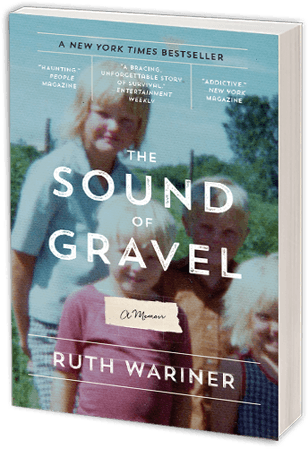
by Guest | Apr 14, 2017 | Archive
Best-selling Author of “The Sound of Gravel” Reading & Discussion April 18

The Year of Wellness and the Tillamook County Women’s Resource Center are sponsoring this important community conversation about child sexual abuse with a reading by author Ruth Wariner on April 18th from 5:30 to 7 pm at Tillamook Bay Community College. Child sexual abuse is far more common than most people know.
Wariner shares her story of childhood abuse, focusing on her healing journey.
“The Sound of Gravel” is Wariner’s memoir about her life – raised in horrifying poverty, abused by a stepfather, she made a desperate break for freedom when she was 15.
A harrowing story – “Heartstopping …. Wrenching” said Entertainment Weekly. “A story you won’t soon forget,” said Good Housekeeping. Join us as we hear Wariner reveal why she couldn’t stop fighting until she and her siblings were safe and how she has learned to find peace, forgiveness, and resilience.
There will be a discussion about tools and resources for help, hope, and healing for survivors and for the community. All community members play a part in the social and emotional well-being of children and families. By talking about sexual assault and child abuse, provides support for survivors, and spreads the word about resources and help that is available in the community. Through community conversations, we all learn about ways to reach out and help survivors feel supported. Join us on Tuesday April 18th with author Ruth Wariner, reading from her memoir “The Sound of Gravel” at 5:30 pm at Tillamook Bay Community College.
April is Sexual Assault Awareness month, for more information about what you can do spread the word and support survivors, contact the Tillamook County Women’s Resource Center at 503-842-9486 or www.tcwrc.net.
This is also Child Abuse Awareness month — contact the Northwest Parenting Program for positive parenting information at 503-842-8201 ext. 270, and report child abuse by calling 911 or 877-302-0077.
It’s time to talk about it.
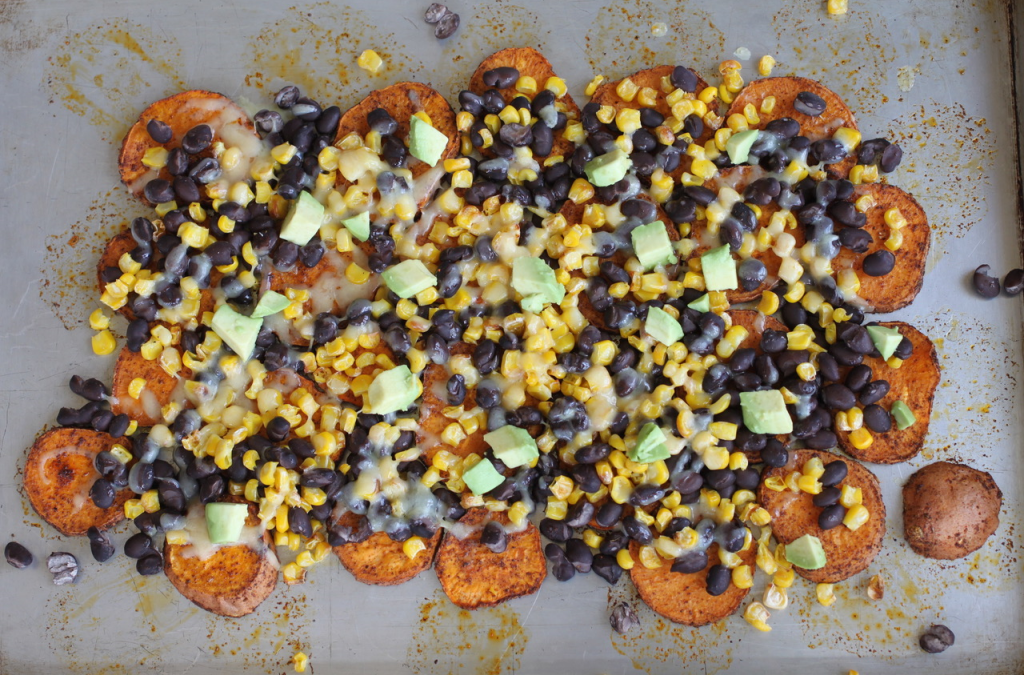
by Guest | Feb 25, 2017 | Archive
By Judy Barbe, registered dietitian, LiveBest
“You have brains in your head, you have feet in your shoes, you can steer yourself in any direction you choose.”
-Dr. Seuss
You’ve likely entered a drawing where you must be present to win a prize. Now think about how that applies to you. To me, you must be present to win means that you need to show up in your own life. Living with intention and making the most of what you have, to live the life you want.
Are you using your brains and feet to live that life? Most people want to live with vitality — to live a higher quality of life longer. Yet, most of us don’t need a complete overhaul — but, instead, a touch up, a refresh, a reboot.
For that reboot to begin, you need to make a decision when you come to a fork in the road. I believe you’re reading this because you want to take the fork that leads you to live even better.
Yay, you!
A LiveBest Reboot

Judy Barbe, featured presenter at Eating Well, Being Well March 11
As a registered dietitian, people always want to know what I eat. So, I started writing down what I ate. That became my book, Your 6-Week Guide to LiveBest, Simple Solutions for Fresh Food & Well Being. My goal was to take the mystery out of “healthy eating” and to help people explore more power-packed foods. It’s true that foods can be delicious and good for you – all on the same fork. But food alone can’t bear the burden of a healthy lifestyle. What you put on your fork, how you use your feet, whom you connect with, and how you feed your soul are keystones to better living. It’s all about having a positive approach to food and having good life patterns that set us up for success.
Want your own reboot?
Join the fun! I invite you to invest a few hours in yourself at the Year of Wellness Eating Well, Being Well good-for-you workshop on March 11. Organized by Tillamook County Year of Wellness, we will nudge you to be stronger, healthier and happier.
- Featured Presenter: Judy Barbe, Registered Dietitian
- Local presenters will talk about nutrition resources in Tillamook County
- Q&A moderated by Jessica Linnell, PhD, Assistant Professor of Practice in Family and Community Health, Oregon State University Extension
- Plus a cooking lesson lead by Hallie Hopkins, Education Program Assistant, SNAP-Ed, Oregon State University Extension
Register online http://bit.ly/TillamookYearofWellness or call (503) 842-3433. Better get to it because the first 50 people win a prize! Those who register early will receive a FREE copy of my book. But, you must be present to win 😉
Thanks to the generosity of our sponsors: Oregon Dairy and Nutrition Council, Oregon Food Bank, and Oregon State University Extension.
Eating Well, Being Well – March 11 – 1:00 – 5:00 pm
Partners for Rural Innovation Center/NEW OSU Extension office, Rooms 105 & 107, 4506 3rd Street, Tillamook
In the meantime, enjoy these Sweet Potato Nachos. No chip required!
Seriously Simple Sweet Potato Nachos
Recipe source: Judy Barbe, LiveBest.info
Number of servings: 2
Ingredients:
1 large sweet potato, sliced 1/4-inch rounds
1 teaspoon chile powder
1 teaspoon canola oil
1 10-ounce can black beans, drained and rinsed
1 10-bag frozen corn
1/4 cup cheese, shredded
1/2 avocado, chopped
Directions:
Preheat oven to 425°F.
In a large bowl, stir sweet potatoes with chile powder and oil. Lay potatoes in a single layer on large baking sheet. Bake for 18-20 minutes until cooked through. A little browning is OK.
Place the corn in an ovenproof skillet. Roast in oven, stirring once, (at the same time you’re cooking the potatoes). Cook until some are turning brown, 18-20 minutes.
When potatoes are done, top with black beans, corn and cheese. Return to oven and heat until cheese melts. Sprinkle with avocado.
Connect with me on Twitter @JudyBarbe or visit my www.livebest.info.












